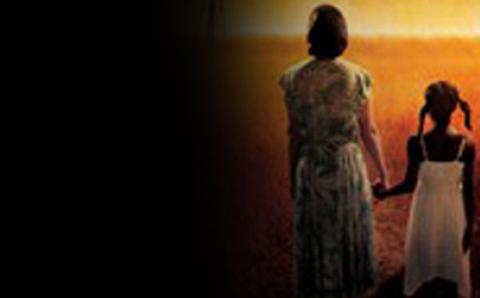Exactly 450 years ago, in 1563, the Heidelberg Catechism was first published in a small section of the Holy Roman Empire as a way of instructing ordinary Christians in the basic truths of Scripture. Today we join millions of Reformed Christians around the world in celebrating this anniversary of a much-loved confession.
There’s no question that the catechism has been a gracious gift of God to the church. No other confession spells out foundational biblical teachings—what we need to knowabout our guilt, God’s grace, and our gratitude—with such clarity, order, and warmth as the Heidelberg. It has provided solid instruction in the Reformed faith for generations, guiding young and old through the Apostles’ Creed, the sacraments, the commandments, and the Lord’s Prayer in 129 carefully crafted questions and answers. The Heidelberg is arguably still the best teacher of what it means to be a Reformed Christian in today’s world.
The catechism that began so humbly now binds together some 20 million Reformed and Presbyterian Christians around the world in close to 40 different language groups. It unites contemporary believers to all those, present and past, who have confessed that we are not our own, but belong to our faithful Savior, Jesus Christ. “We recite the creeds and confessions as a way of proclaiming that we are part of a great faith that has formed our lives,” says Craig Barnes in his new book Body and Soul: Reclaiming the Heidelberg Catechism.
What distinguishes the Heidelberg from most of the other catechisms born of the Reformation is that it so compellingly touches our hearts as well as engages our minds. It is a warm, living, personal confession of faith that provides a practical guide to day-to-day Christian living. “Much of the catechism seems to have been written from bended knees,” wrote Cornelius Plantinga, Jr. Perhaps we don’t often think of the catechism as devotional, but it is exactly that.
Whether the catechism is an old friend, a nodding acquaintance, or a total stranger, consider honoring its 450th birthday with a thoughtful and prayerful devotional reading. Take it slow and read a Lord’s Day at a time, or get the big picture in a single reading. If you want to go deeper, Andrew Kuyvenhoven’s Comfort and Joy: A Study of the Heidelberg Catechism is a classic question-by-question guide. For a fresh look at the catechism for our changing world, try Barnes’s Body and Soul, a six-chapter overview of the catechism in its latest ecumenical format.
A Devotional Reading
The authors of the catechism let you know immediately that it’s addressed to you, personally and pastorally: “What is your only comfort in life and in death? That I am not my own but belong . . . to my faithful Savior Jesus Christ,” Q&A 1 famously says. Zacharias Ursinus, one of the authors of the catechism, once said that “he would not take a thousand worlds for the blessed assurance of being owned by Jesus Christ.”
This comfort, this strength, this security in belonging to Christ, is a golden thread woven through the catechism from beginning to end. Again and again the catechism assures us that we are in good hands, that God is actually interested in comforting us (Q&As 1, 2, 52, 57, 58), and that every action of our loving Father is for our benefit (Q&As 36, 45, 49, 51). “If this comfort,” says Andrew Kuyvenhoven in Comfort and Joy,“this knowledge of belonging to Christ, has fully entered our consciousness, we can endure all pain, fight every battle, and be confident of the outcome.”
Who’s Asking?
We probably don’t think much about who is asking the 129 questions of the catechism. But suppose, as Craig Barnes suggests in Body and Soul,that none other than Godis asking us these questions: “What if the only one who can provide true comfort has just grabbed you by the shoulders and asked. ‘How are you?’ No one can offer a glib ‘Fine’ and keep moving. Suddenly all of our hustling about to make life right is stopped dead in its tracks. We’re forced to tell God the truth. This is the real function of . . . catechisms. . . . They begin an intimate, holy dialogue between us and our Comforter, between us and our God.”
As you read through the catechism, begin that holy conversation with God. Picture God, if you will, asking you what your faith means to you (Q&A 21). Or imagine God, perhaps at a moment of crisis in your life, asking you how much you trust him and what he is both able and willing to do for you (Q&A 26). Or see yourself talking with Jesus about why you call him your Lord (Q&A 34) or why you claim the name “Christian” (Q&A 32). When you’ve stumbled into a familiar sin and suffer the pain of guilt, listen to God asking you to recall what you believe about the forgiveness of sins, and be reminded that none of your sins, because of Christ’s atonement, will ever be held against you (Q&A 56).
Living Our Gratitude
Good devotional literature not only instructs and inspires, it also affects how we live from day to day. Having shown us the way out of our misery through the saving work of Jesus Christ, the catechism offers us two ways to show our gratitude: through observing God’s law as expressed in the Ten Commandments and through prayer.
God’s law, as explained by the catechism, isn’t just a legalistic series of “Don’t do this!” and “By all means, don’t do that!” Instead, the catechism presents the law as a spiritual guide to joyful Christian living, giving the commandments broad and positive applications. So, for example, the sixth commandment not only warns us against murder and the roots of murder but also commands us to “protect [our neighbors] from harm as much as we can.” The eighth commandment not only prohibits theft of all kinds but also urges us to “do whatever [we] can for our neighbor’s good.” Moreover, we do these things not because we have to but because we “delight to do every kind of good as God wants us to do” (Q&A 90).
The catechism ends with a moving devotional treatment of the Lord’s Prayer. Rather than merely explaining each petition, the authors of the catechism stunningly turn their explanations into powerful prayers that beg to be said on bended knee: “Hallowed be your name means, Help us to really know you, to bless, worship, and praise you for all your works and for all that shines forth from them” (Q&A 122). Savor these prayerful answers, pray them aloud, and find new meaning and depth in the prayer you’ve said since you were a child.
By God’s grace, the Heidelberg Catechism has survived for 450 years. Put it on your reading list and let this comforting confession of the church speak to your heart and mind—and your everyday life.
All-Church Celebration
Join with your congregation in celebrating the 450th anniversary of the Heidelberg Catechism. All the resources needed for an all-church six-week event are available from Faith Alive (faithaliveresources.org). They include outlines of worship services, the book and DVD Body and Soul by Craig Barnes, and small group discussion materials.
Reformed Matters: A Confession to Celebrate
- Rozema observes that the sin-salvation-service structure of the Catechism reflects our daily experience. Is that true for you? Why or why not?
- Do you find the “I/me/mine” language of the catechism appropriate in our day and age? Why or why not?
- Review the “foundational biblical teachings” Rozema lists. Are these the ones you would choose? Which should be added? Which could be left out?
- Should we still have preaching based on the Heidelberg Catechism? Why or why not?
- Do you agree that the Heidelberg is arguably still the best teacher of what it means to be a Reformed Christian in today’s world? Either way, how could we improve it?
About the Author
Bob Rozema is a (mostly) retired editor for Faith Alive Christian Resources. He is a member of Ferrysburg (Mich.) Community Church, a Christian Reformed congregation.









